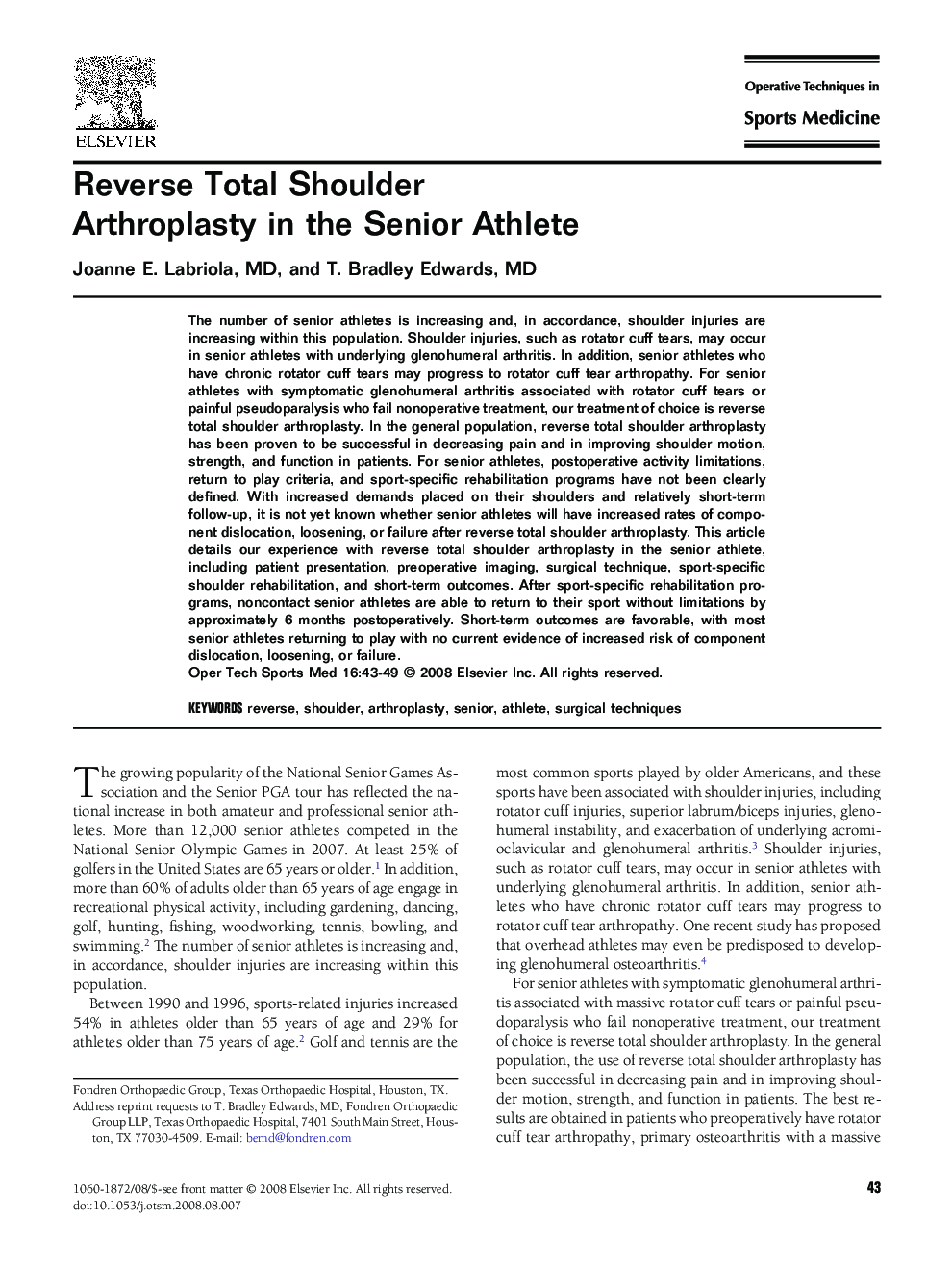| Article ID | Journal | Published Year | Pages | File Type |
|---|---|---|---|---|
| 4079915 | Operative Techniques in Sports Medicine | 2008 | 7 Pages |
The number of senior athletes is increasing and, in accordance, shoulder injuries are increasing within this population. Shoulder injuries, such as rotator cuff tears, may occur in senior athletes with underlying glenohumeral arthritis. In addition, senior athletes who have chronic rotator cuff tears may progress to rotator cuff tear arthropathy. For senior athletes with symptomatic glenohumeral arthritis associated with rotator cuff tears or painful pseudoparalysis who fail nonoperative treatment, our treatment of choice is reverse total shoulder arthroplasty. In the general population, reverse total shoulder arthroplasty has been proven to be successful in decreasing pain and in improving shoulder motion, strength, and function in patients. For senior athletes, postoperative activity limitations, return to play criteria, and sport-specific rehabilitation programs have not been clearly defined. With increased demands placed on their shoulders and relatively short-term follow-up, it is not yet known whether senior athletes will have increased rates of component dislocation, loosening, or failure after reverse total shoulder arthroplasty. This article details our experience with reverse total shoulder arthroplasty in the senior athlete, including patient presentation, preoperative imaging, surgical technique, sport-specific shoulder rehabilitation, and short-term outcomes. After sport-specific rehabilitation programs, noncontact senior athletes are able to return to their sport without limitations by approximately 6 months postoperatively. Short-term outcomes are favorable, with most senior athletes returning to play with no current evidence of increased risk of component dislocation, loosening, or failure.
